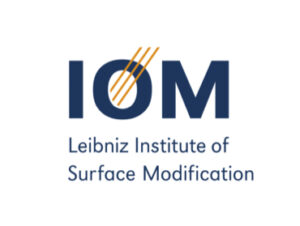Mendes Ferreira
The behavior of crystallizable synthetic polymer chains confined in a liquid crystalline matrix had been scarcely investigated, and there were no investigations reported on the potential crystallization of such macromolecules under these conditions. Gaining a more thorough understanding was important, as one example in this context was the incorporation of crystallizable synthetic polymers in cell membranes, a highly relevant biophysical problem, considering the accumulation of plastic marine debris and the consequent potential inclusion of polymer nanoparticles into the food chain, as well as the increasing use of nanoparticles with hydrophobic polymers such as poly(ε-caprolactone) for medical use and other applications. Moreover, it was not known if by crystallizing synthetic polymer chains under confinement in a liquid crystalline matrix, one could control the polymer crystalline morphology by means of the confinement variables, which could potentially motivate technological applications.
The proposed project aimed, therefore, to investigate for the first time how the confinement of crystallizable synthetic polymer chains in anisotropic solvents affected crystallization with respect to nucleation, growth rate, and ultimately the final morphology of polymer crystals. In order to test confinement systems with a wide range of properties, such as spatial dimensions, geometry, and molecular ordering and dynamics, we used distinct liquid crystalline systems, such as phospholipids, surfactants, and amphiphilic block copolymers. For a detailed characterization of the systems, both prior to, during, and after crystallization of the polymer chains under confinement, we used a combination of different experimental and simulation techniques, namely nuclear magnetic resonance (NMR) spectroscopy, differential scanning calorimetry (DSC), optical microscopy, small/wide-angle X-ray scattering, and molecular dynamics (MD) simulations.
Crystallization under these conditions should have been highly dependent on the conformation adopted and type of partitioning of the chains in the liquid crystalline structure. When the polymer chains aggregated into emulsified microdomain spherical or lens-shaped droplets, the physics of crystallization should have related to the thermodynamics of droplet confinement, while if the chains became dispersed in the liquid crystalline structure, the crystals may have related to solution-grown crystals which, for example, may have pre-crystallized into bundles. The main aim of this project was, therefore, to determine (1) which confinements were adopted by a number of different crystalline polymers, using both homopolymers and amphiphilic block copolymers, and (2) how the confinement types in the liquid crystalline structure affected crystallization.
Highlighted Publications:
- Anika Wurl, Maria Ott, Eric Plato, Annette Meister, Farzad Hamdi, Panagiotis L. Kastritis, Alfred Blume, Tiago M. Ferreira, Filling the Gap with Long n-Alkanes: Incorporation of C20 and C30 into Phospholipid Membranes, Langmuir 38, 8595–8606 (2022)
- Anika Wurl, Kay Saalwächter, Tiago Mendes Ferreira, Time-domain R-PDLF NMR for molecular structure determination in complex lipid membranes, Magnetic Resonance, Preprint
Other publications of this group:Anika Wurl, Tiago M. Ferreira,Atomistic MD Simulations of n-Alkanes in a Phospholipid Bilayer: CHARMM36 versus SlipidsMacromol. Theory Simul. , 2200078 ...
Read MoreAnika Wurl, Maria Ott, Eric Plato, Annette Meister, Farzad Hamdi, Panagiotis L. Kastritis, Alfred Blume, Tiago M. Ferreira,Filling the Gap ...
Read MoreAlexey Krushelnitsky, Günter Hempel, Yury Golitsyn, Anika Wurl, Kay Saalwächter, and Detlef Reichert,Trajectory-Based Approach for the Analysis of CODEX Solid-State ...
Read More






